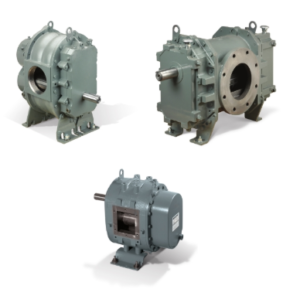Positive displacement (PD) blowers are very efficient at many types of processes such as vacuum processing, conveying, blending and aeration. They are vital pieces of equipment for the chemical, dairy, bulk handling, oil & gas and pulp & paper industries. Despite the critical role that a PD blower plays in many manufacturing processes, it comes with one big drawback: they are notoriously noisy. In the first of this three part article, I’ll discuss why it is important to address the noise sources and frequencies emanating from a PD blower in your facility.
Sources and Frequencies
When a PD blower is operating, there are three sources of noise:
- Air borne – caused by the pulsing of air through the inlet and outlet

- Mechanical – caused by the motor, gears and impellers
- Vibration – caused by the force of the pulsing air
Of these three noise sources, air borne noise is the loudest and draws the most focus for attenuation. In some cases, air borne noise level can exceed 100 dBA.
The frequency of air borne noise is greatly impacted by the operating speed of a PD blower in relation to its transition speed. PD blowers operating below their transition speed generate low to middle frequency noise while those operating above their transition speed generate higher frequency noise. Air borne noise frequency is one of the determining factors in which type of attenuation device will work best.
Noise Safety Standards
OSHA noise standards limit workplace exposure to 2 hours of 100 dBA and 8 hours of 90 dBA. The National Institute for Occupational Safety and Health (NOISH) recommends limiting exposure to 8 hours at 85 dBA. Most companies will use the NOISH level as their target exposure time for workers.
The 85 dBA sound level is equivalent to standing next to a running food blender in your kitchen. Because sound levels double for every 10 dBA, a noisy PD Blower generating over 100 dBA will be more than twice as loud as that food blender. A noisy PD blower needs to be silenced to avoid OSHA fines and to keep workers safe and healthy.
Join me in this 3 Part Series to gain insight and learn ways Eldridge has helped our customer solve problems with noisy PD blowers.
